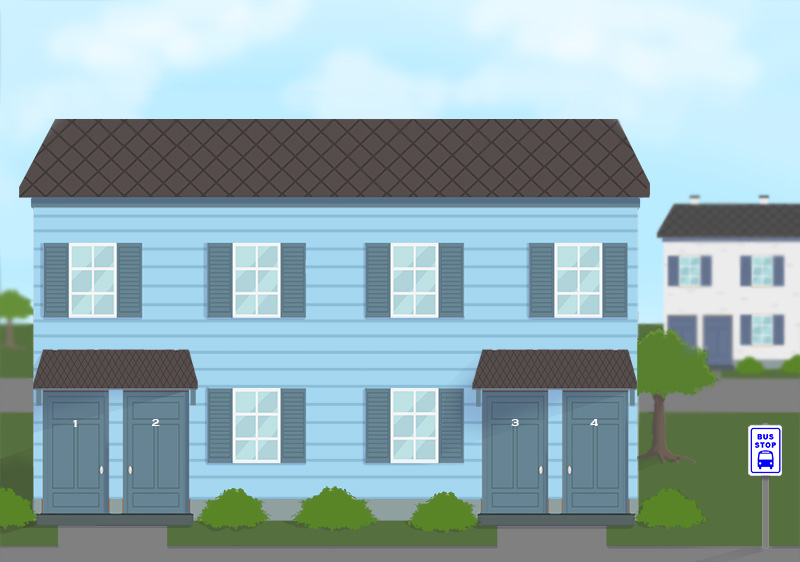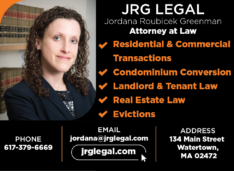Washington Signs Multifamily as of Right into Law; Massachusetts Should Continue to Follow Suit
By Kimberly Rau, MassLandlords, Inc.
This past May, Washington Governor Jay Inslee signed House Bill 1110 into law. The new law legalizes duplexes in all residential areas of cities with populations over 25,000, and four-unit homes in all residential areas of cities with populations over 75,000, with options for even greater zoning density for neighborhoods close to transit, or for units of affordable housing.

New legislation in Washington state removes zoning exclusions from most cities, allowing the option for four-family residences on many plots. (Image License: CC-BY-SA Jennifer Rau MassLandlords)
While removing zoning restrictions will always be met with opposition from certain groups, this is a step in the right direction to alleviate aspects of the housing crisis. Massachusetts has already enacted some policy around zoning changes. Washington provides an example of what could be next.
An Overview of House Bill 1110
Lawmakers in Washington state have introduced multifamily zoning bills before, but had not been successful in getting them passed into law, until this year. House Bill 1110 eliminates laws against multifamily zoning in most neighborhoods in cities with populations greater than 25,000. This does not make it illegal to build a single-family home on a lot; instead, House Bill 1110 makes it unlawful for neighborhoods or communities to create zoning ordinances that prohibit multifamily zoning for residential neighborhoods.
For cities with populations between 25,000 and 75,000, duplexes must be allowed in most residential neighborhoods. Four-unit construction would be allowed if at least one unit meets affordable housing requirements. Neighborhoods within a half-mile of major transit stops, parks or schools would also be compelled to allow four-unit construction.
For cities with populations greater than 75,000, all residential areas may now have four-family homes. If any of the two units are affordable, six-family homes may also be constructed. Six-unit construction is also permitted in neighborhoods near major transit stops, parks or schools.
Rep. Jessica Bateman (D-Olympia), who was the lead sponsor of the bill, noted in an interview that this law will apply to any future homeowners’ associations. It does not, however, apply to existing homeowners’ associations.
“We can’t change the land use of a contract that already exists that people entered into when they purchased a home,” Bateman told Volts, a podcast about eliminating fossil fuels.
This law is particularly timely, as Washington will need approximately 1 million new homes over the next two decades to keep up with its population growth. Oregon and California have passed laws to eliminate single-family zoning restrictions, and other states are exploring the issue.
Are There Any Places in Massachusetts with Zoning as of Right Laws?
Massachusetts has not eliminated single-family zoning restrictions, but it has taken steps in that direction.
In January 2021, then-Governor Charlie Baker signed the Housing Choice Act, also known as Chapter 358 of the Acts of 2020, into law. This reduced voting thresholds for certain big zoning decisions within municipalities.
The Housing Choice Law allows pro-density zoning changes in cities and towns to be enacted by a simple majority vote, instead of a super majority vote (where two-thirds of a voting body would need to vote in favor of change). Notably, zoning that will allow the construction of accessory dwelling units on single-family properties will be easier for municipalities to enact with this change. Communities including Salem and Arlington are moving forward with ADU-friendly zoning. We hope many others will follow suit.
The MBTA Communities Act separately became effective in the fall of 2022. This act is a set of zoning standards that requires all communities serviced by the Massachusetts Bay Transit Authority to have at least one “zoning district of reasonable size” where multifamily housing is allowed as of right. These districts must have a minimum gross density of 15 units per acre, and be suitable for families with children and not age-restricted. They also must be within a half-mile of a commuter station, subway station, ferry terminal or bus station.
MBTA communities without zoning that meets the new requirements were required to submit an action plan at the beginning of 2023. Some communities had not submitted plans as of March 2023. Others, including Brookline, submitted a brief plan of action. At least in Brookline, actual implementation of said plan has been the subject of debate within the community. However, Attorney General Andrea Campbell issued an advisory reminding communities that compliance with the MBTA zoning law is mandatory, and failure to comply could result in civil action. Furthermore, it could run municipalities afoul of federal and state fair housing laws.
Why As-of-Right Zoning is One Answer to Our Housing Problems
The housing crisis in America is a multi-faceted issue, with no single solution. But removing single-family zoning restrictions, as House Bill 1110 and the MBTA Communities Act both do, is certainly a step in the right direction.
The most obvious benefit to as-of-right zoning ordinances is that more housing units equals more housing. If you can place four housing units where one might have gone, you’re allowing three more families to have a home. More housing inventory not only provides more housing options, it also theoretically makes housing more affordable. Less inventory = higher demand and higher prices. More inventory = lower prices.
This may seem like bad news to you as a landlord. Housing providers may be concerned that more inventory will result in rents dropping, but historically, this has been a very rare occurrence. The more likely “worst case” scenario is that your rents will remain constant. And there’s a silver lining: You would also have the option to build more units. More housing means more tenants, which gives you more stability as a landlord. If you have just one tenant, and that renter falls on hard times and misses the rent, your entire operation is without income until the situation is rectified. But what are the odds that multiple units would have the same problem at the same time? Your income stream will be less volatile if it is spread out among more units.
More housing units also have the potential to help the environment. A 2021 article from California YIMBY (“Yes in My Backyard”) reports that “a world with more apartments is a world with fewer greenhouse gas emissions.” The article states that single-family homes are less energy efficient, using more energy than multifamily homes, especially for heating the space. This is a big deal in Massachusetts, where winters can be brutal. More efficient homes save money on heating costs, and reduce greenhouse gas emissions.
Making sure these multifamily units are close to public transportation reduces an individual’s reliance on cars, another boon for the environment. Individual health and wellbeing also gets a bonus when exercise is built right into your day.
Conclusion
Housing is a complex issue. Too often, landlords are left out of the discussion, and this is one reason why Massachusetts continues to fall behind on housing policy. If Washington recognizes that it is going to need a lot more housing, maybe Massachusetts will too before long.
And for many people, safe, accessible housing starts with you. It’s why we’ve consistently put our support behind legislation that promotes good housing for all, and drafted some of our own bills as well. The housing crisis and climate change don’t have simple solutions, but if we stand together, we can continue to work in the right direction for everyone.




